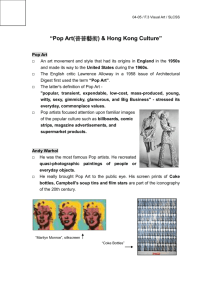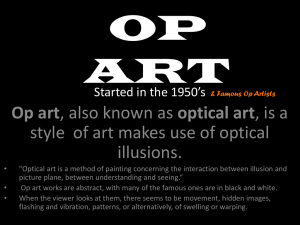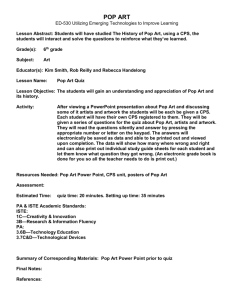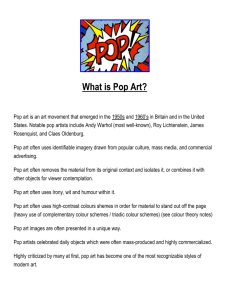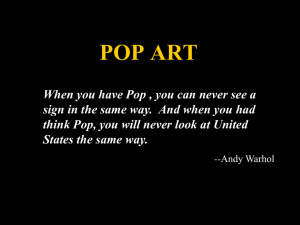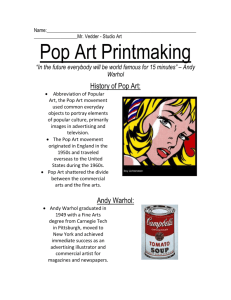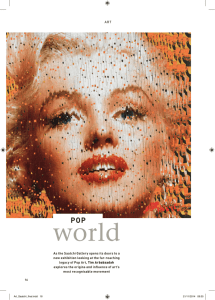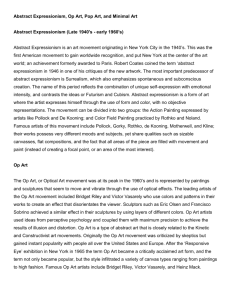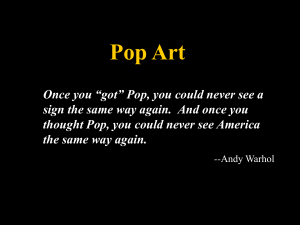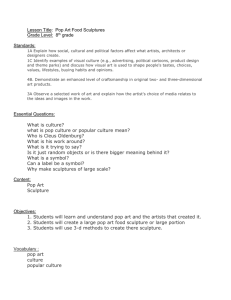pop art
advertisement
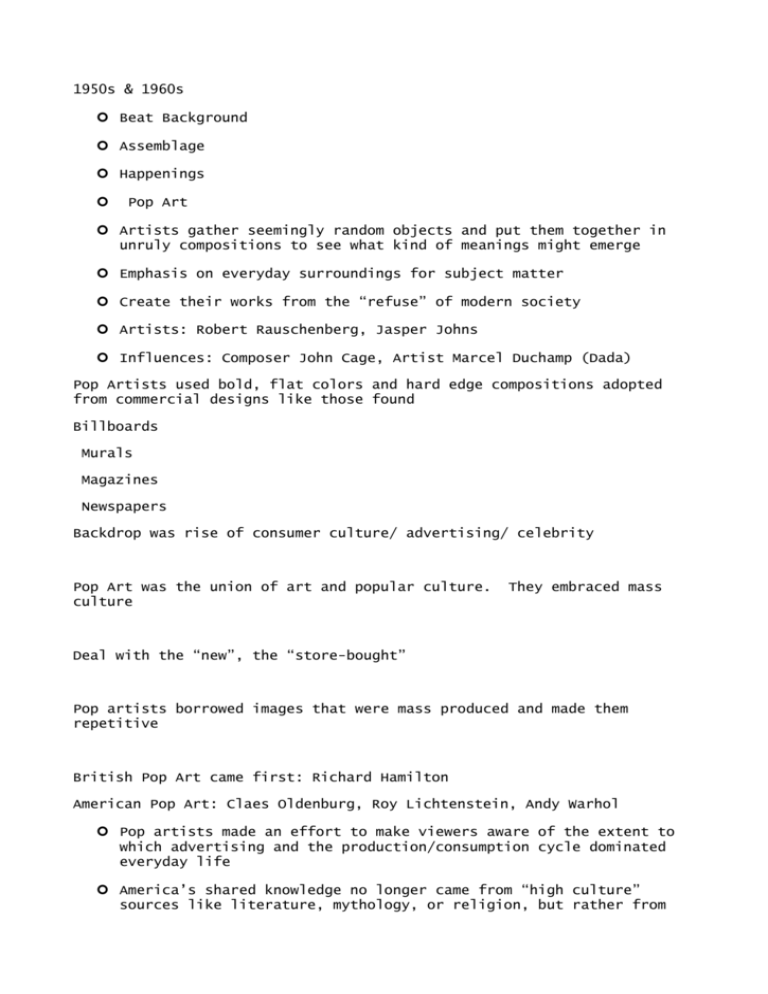
1950s & 1960s Beat Background Assemblage Happenings Pop Art Artists gather seemingly random objects and put them together in unruly compositions to see what kind of meanings might emerge Emphasis on everyday surroundings for subject matter Create their works from the “refuse” of modern society Artists: Robert Rauschenberg, Jasper Johns Influences: Composer John Cage, Artist Marcel Duchamp (Dada) Pop Artists used bold, flat colors and hard edge compositions adopted from commercial designs like those found Billboards Murals Magazines Newspapers Backdrop was rise of consumer culture/ advertising/ celebrity Pop Art was the union of art and popular culture. culture They embraced mass Deal with the “new”, the “store-bought” Pop artists borrowed images that were mass produced and made them repetitive British Pop Art came first: Richard Hamilton American Pop Art: Claes Oldenburg, Roy Lichtenstein, Andy Warhol Pop artists made an effort to make viewers aware of the extent to which advertising and the production/consumption cycle dominated everyday life America’s shared knowledge no longer came from “high culture” sources like literature, mythology, or religion, but rather from television, movies, and advertisements. Pop artists reflected this by blurring the distinction between art and consumption. The movement examined the effects of consumerism on human thought, emotion, and creativity. It posed the question: what is more important, the thing or its image? • Pop Artists reflected 60’s culture by using new materials in their artworks including: • Acrylic Paints • Plastics • Photographs • Fluorescent and Metallic colors As well as new technologies and methods: • Mass production • Fabrication • Photography • Printing • Serials • Andy Warhol was one of the most famous Pop Artists. Part of his artistic practice was using new technologies and new ways of making art including Photographic Silk-Screening • Repetition • Mass production • Collaboration • Media events Warhol appropriated (used without permission) images from magazines, newspapers, and press photos of the most popular people of his time Warhol took common everyday items and gave them importance as “art” He raised questions about the nature of art: What makes one work of art better than another? Pop artists stretched the definitions of what art could be and how it can be made.
